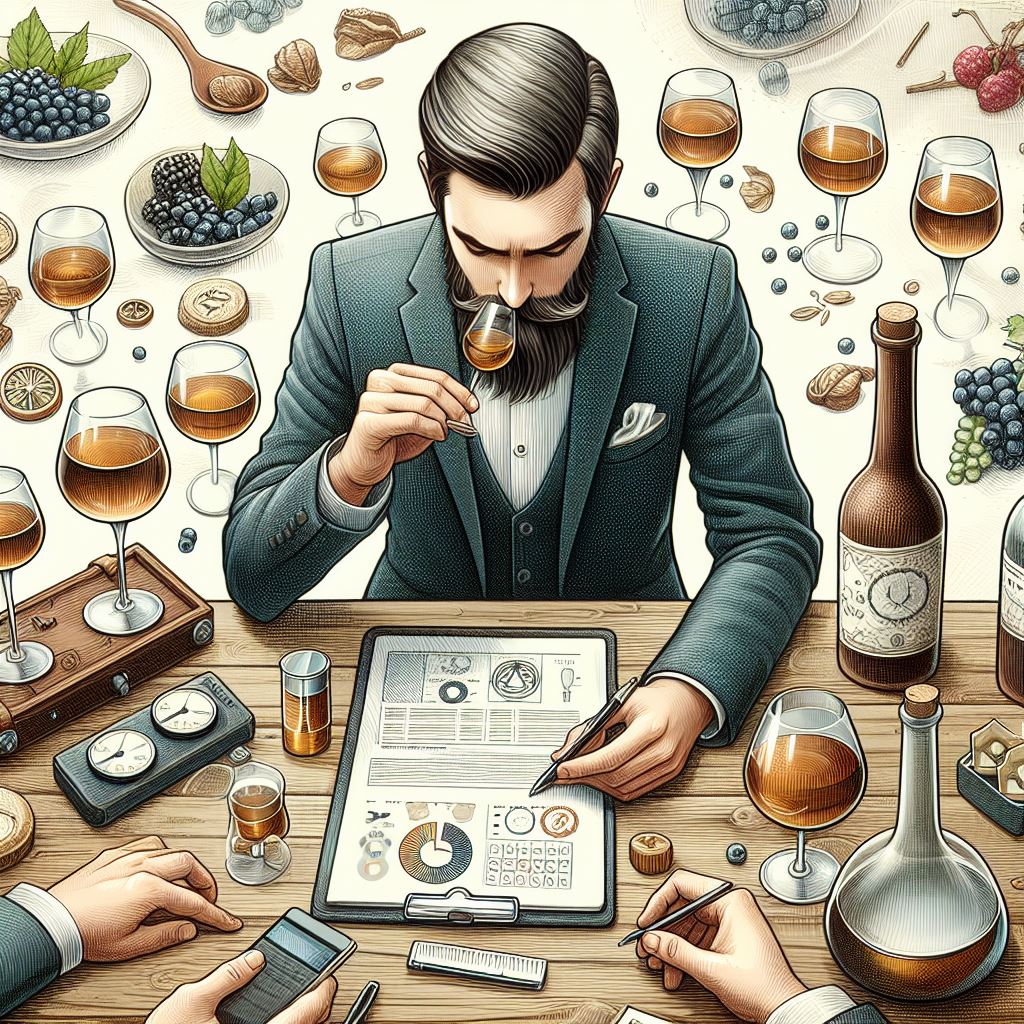
Table of Contents
Whether you’re a seasoned connoisseur or a curious newcomer, conducting a professional tasting of single malt whisky can transform your appreciation of this distinguished spirit. In this guide on liquorlores.com, we’ll walk you through the essential steps of sensory evaluation and how to create detailed tasting notes that capture the full experience of a single malt.
Step 1: Setting the Scene
Professional tastings require attention to environment and detail. Choose a quiet, well-lit room free from strong odors that could interfere with your sense of smell. Ensure that your glassware is clean and appropriate for whisky tasting—typically a tulip-shaped glass, which helps concentrate aromas at the neck, enhancing the sensory experience.

Step 2: The Visual Examination
Begin by examining the whisky’s color, which can provide clues about the cask used during maturation and the age of the whisky. A deeper color might suggest a longer aging process or the influence of sherry or wine casks. Swirl the whisky gently in the glass to observe its legs or tears, which can give you an indication of its body and alcohol content.
Step 3: Nosing the Whisky
Nosing is perhaps the most crucial part of tasting. Approach it in two phases:
First Nose
Take a gentle sniff with your mouth slightly open to avoid being overwhelmed by alcohol vapors. Identify the first impressions—common aromas include vanilla, oak, citrus, or peat.
Second Nose
After swirling the whisky again, take a deeper inhale to uncover secondary aromas. Look for complexity like floral notes, spices, or deeper fruitiness.
Step 4: The Tasting
Take a small sip and let the whisky coat your palate. Roll it around your mouth to expose all taste zones to the whisky. Note the mouthfeel (creamy, oily, dry) and flavors. Initially, you might detect sweetness, bitterness, or acidity, which evolve into more specific tasting notes like chocolate, nuts, or specific fruits.
Step 5: The Finish
After swallowing, consider the finish—this is the aftertaste that remains. A long, pleasing finish is often the hallmark of a quality single malt. The finish might introduce new flavors or leave you with a lingering sense of the primary notes.
Step 6: Writing Tasting Notes
When writing your tasting notes, be descriptive and personal. Start with basic descriptors and build up to more detailed notes:
Appearance
Color and viscosity.
Nose
Primary and secondary aromas.
Palate
Flavors, mouthfeel, and evolution.
Finish
Length and characteristics.
Step 7: Reflection and Discussion
After your notes are complete, reflect on the experience and discuss it with fellow tasters. Sharing insights can help deepen understanding and appreciation.
Beginning the Journey to Professional Tasting
For those embarking on a journey into the world of single malt whisky, starting with a selection that showcases a variety of styles and regions can greatly enhance the tasting experience. Here are some carefully chosen single malt whiskies that are perfect for both newcomers and seasoned enthusiasts to explore during a professional tasting:
| Whisky Name | Region | Flavor Profile |
|---|---|---|
| Glenfiddich 12 Year Old | Speyside | Pear and subtle oak flavors; a classic representation of Speyside. |
| Lagavulin 16 Year Old | Islay | Rich smoky flavors and a deep, peaty profile. |
| Talisker 10 Year Old | Isle of Skye | Sea salt and spicy pepper notes. |
| Aberfeldy 12 Year Old | Highland | Balanced with notes of honey, spices, and a touch of smoke. |
| The Balvenie DoubleWood 12 Year Old | Speyside | Complex sweetness, dried fruits, and subtle nuttiness. |
| Ardbeg 10 Year Old | Islay | Lighter peat and smoky flavors with a citrusy undertone. |
| Dalwhinnie 15 Year Old | Highland | Smooth and mellow with hints of heather and honey. |
| Laphroaig Quarter Cask | Islay | Intense peat and subtle sweetness, matured in smaller casks. |
Mastering the art of whisky tasting is a rewarding journey that enhances not only your tasting skills but also your overall enjoyment of single malts. With practice, your sensory evaluation will become more refined, making each tasting a profound experience. Cheers to your journey into the rich, complex world of single malt whisky!
Whether you’re hosting a tasting event or enjoying a quiet evening with a fine bottle, this guide will help you approach each sip with a discerning palate and a keen sense of exploration.
How useful was this post?
Click on a star to rate it!
Average rating 0 / 5. Vote count: 0
No votes so far! Be the first to rate this post.
